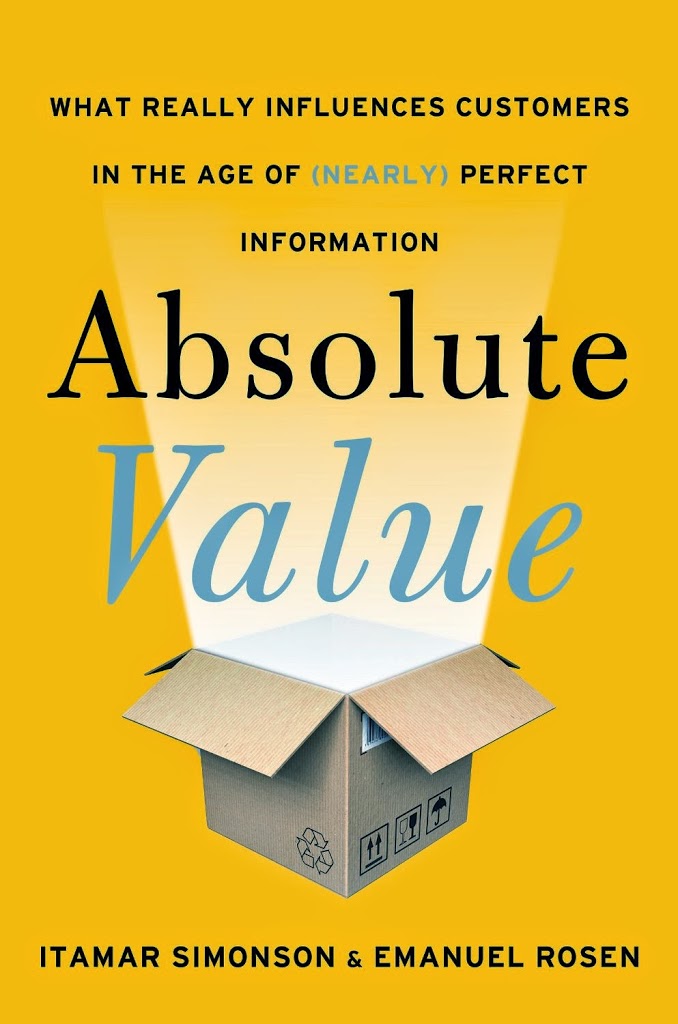But today, the balance has shifted because a brand has other strong influences defining it. These market forces are coming from places like Yelp, Amazon, TripAdvisor and Angie’s List. The consumer can learn quickly about a destination, a product or music before it ever hears from the brand. You can no longer rely exclusively on the brand to have that control since today the consumer’s voice can easily be heard.
 A new book called Absolute Value by Stanford professor Itamar Simonson and best-selling author Emanuel Rosen argues that an important shift is taking place in most categories where brands must share control over the position that a brand/product occupies. Consumers may tell a very different story about service at a hotel than the hotel would tell in its advertising. The hotel might describe a waterside view differently than 300 consumers who stay in that room and share their first-hand experience. Simonson and Rosen argue that unless the values in advertising become genuine behavior of a company/brand, all you have are empty platitudes. No amount of advertising can overcome first hand or crowd sourced experiences.
A new book called Absolute Value by Stanford professor Itamar Simonson and best-selling author Emanuel Rosen argues that an important shift is taking place in most categories where brands must share control over the position that a brand/product occupies. Consumers may tell a very different story about service at a hotel than the hotel would tell in its advertising. The hotel might describe a waterside view differently than 300 consumers who stay in that room and share their first-hand experience. Simonson and Rosen argue that unless the values in advertising become genuine behavior of a company/brand, all you have are empty platitudes. No amount of advertising can overcome first hand or crowd sourced experiences.
The critical takeaway for brands is to understand who influences decision making? The consumer may look at Yelp and ignore your advertising. She may go to Angie’s List to get a local recommendation and never believe what you say.
If you work in a B2B marketplace, who does the decision makers look to for information and how are they influenced? Does everyone listen to one guru in the category or is a complex matrix that you have to map out for each customer you are trying to influence?
An airline or bank that talks about being different and caring about customers may find its message stepped on by the 45 complaining comments on their web blog posts that decries their hypocrisy. GM may want you to believe that they care about safety, but the tsunami of tweets about their deceitful behavior drowns out the story they hope their advertising will tell.
Before you stake out a claim about your brand, you better understand who is really in the driver’s seat.
~~~~~~~~~~~~~~
Where did I learn about this new book? Not from an advertisement but I heard Mitch Joel on his great podcast. Check out Six Pixels of Separation for some great conversation on current marketing ideas.





